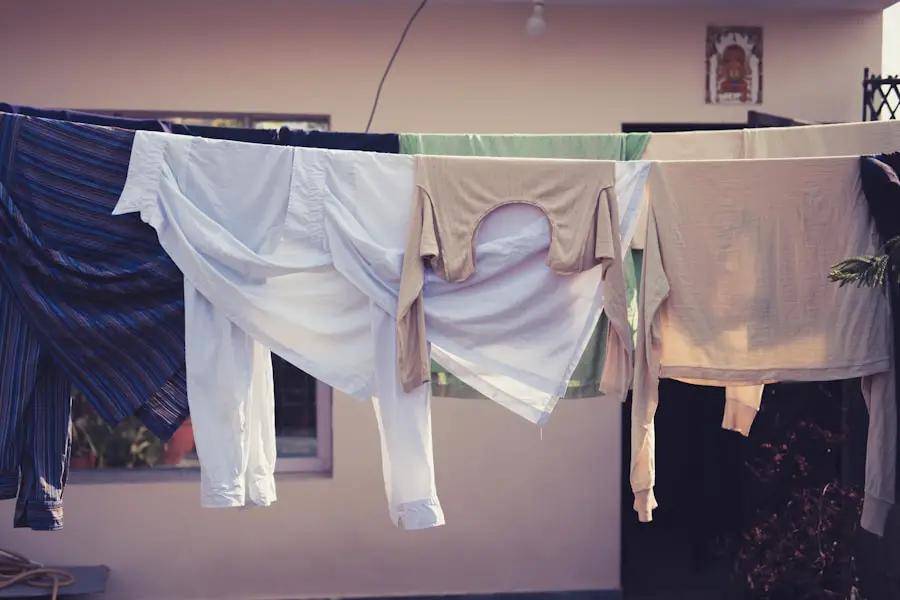Hiking pants come in a variety of styles, each designed to cater to specific needs and preferences of outdoor enthusiasts. The most common types include convertible pants, softshell pants, and waterproof or water-resistant pants. Convertible pants are particularly popular among hikers who appreciate versatility; they feature zippers at the knees that allow the wearer to transform long pants into shorts.
This adaptability is especially useful in changing weather conditions or when transitioning from a cooler morning to a warmer afternoon. The ability to adjust your attire without needing to carry an extra pair of shorts can significantly lighten your load on the trail. Softshell pants, on the other hand, are designed for comfort and flexibility.
They are typically made from stretchy materials that allow for a full range of motion, making them ideal for activities that require climbing or scrambling over rocky terrain. These pants often provide a degree of water resistance and breathability, striking a balance between protection and comfort. For those who frequently hike in wet conditions, waterproof or water-resistant pants are essential.
These pants are constructed with specialized materials that repel water while allowing moisture from sweat to escape, ensuring that the hiker remains dry and comfortable throughout their journey.
Key Takeaways
- Hiking pants come in different types such as convertible, softshell, and hardshell, each with its own unique features and benefits.
- Consider the weather and terrain you will be hiking in to choose the right type of hiking pants for your adventure.
- Finding the right fit is crucial for comfort and mobility during your hike, so consider factors such as waistband, inseam, and articulation.
- The material of hiking pants can greatly impact their performance, so choose a fabric that suits your needs, whether it’s moisture-wicking, quick-drying, or abrasion-resistant.
- Look for features such as reinforced knees, adjustable waistbands, and ventilation options to enhance the functionality of your hiking pants.
Considering the Weather and Terrain
When selecting hiking pants, it is crucial to consider the specific weather conditions and terrain you will encounter on your adventures. For instance, if you plan to hike in a region known for its unpredictable weather patterns, investing in a pair of water-resistant or waterproof pants is advisable. These pants often feature sealed seams and durable water repellent (DWR) coatings that enhance their ability to withstand rain and moisture.
Additionally, many models come with ventilation options, such as zippered thigh vents, which allow for airflow during warmer days or strenuous climbs. Terrain also plays a significant role in determining the best type of hiking pants. If your hikes involve navigating through dense brush or rocky landscapes, you may want to opt for pants with reinforced knees and seat areas.
These features provide added durability and protection against abrasions. Conversely, if you are hiking in a more open area with minimal obstacles, lightweight and breathable fabrics may be more suitable. Understanding the interplay between weather conditions and terrain will help you make an informed decision about which hiking pants will best meet your needs.
Finding the Right Fit for Comfort and Mobility

The fit of hiking pants is paramount for ensuring comfort and mobility on the trail. A well-fitting pair should allow for freedom of movement without being overly baggy or restrictive. When trying on hiking pants, pay attention to the waistband; it should sit comfortably without digging into your skin or slipping down during activity.
Many brands offer adjustable waistbands or include features like belt loops to accommodate different body shapes and sizes. In addition to the waistband, consider the length and cut of the pants. Some hikers prefer a tapered fit that reduces bulk around the ankles, while others may opt for a looser fit for added airflow.
It’s also essential to check the inseam length; pants that are too short can lead to discomfort and exposure to elements, while overly long pants may snag on branches or rocks. When testing for mobility, perform a few squats or lunges to ensure that the fabric stretches adequately and does not restrict your movements during dynamic activities.
Material Matters: Choosing the Best Fabric for Your Needs
| Fabric Type | Durability | Breathability | Water Resistance |
|---|---|---|---|
| Cotton | Low | High | Low |
| Polyester | High | Low | High |
| Nylon | High | Medium | High |
| Wool | High | Low | Medium |
The fabric used in hiking pants significantly impacts their performance and suitability for various conditions. Common materials include nylon, polyester, and blends that incorporate spandex for stretchability. Nylon is favored for its durability and resistance to abrasions, making it an excellent choice for rugged terrains.
Polyester, on the other hand, is lightweight and quick-drying, which is beneficial for hikes that may involve water crossings or high humidity. Blended fabrics often combine the best features of both nylon and polyester while adding stretch through spandex or elastane. This combination allows for greater flexibility and comfort during movement.
Additionally, many modern hiking pants incorporate moisture-wicking technology that draws sweat away from the skin, keeping you dry and comfortable even during strenuous activities. When selecting fabric, consider not only the weight but also how it will perform in your typical hiking environment—whether it’s hot and humid or cool and windy.
Features to Look for in Hiking Pants
When evaluating hiking pants, certain features can enhance your overall experience on the trail.
Pockets are one such feature; having multiple pockets can be invaluable for storing essentials like maps, snacks, or small tools without needing a backpack. Look for pants with secure zippered pockets to keep your belongings safe while you navigate challenging terrain.Another important feature is ventilation options. Many hiking pants come equipped with mesh-lined pockets or zippered vents that allow air circulation during warmer hikes. This can help regulate body temperature and prevent overheating.
Additionally, consider features like articulated knees or gusseted crotches that enhance mobility by allowing for a greater range of motion during climbing or scrambling activities. Reflective elements can also be beneficial for visibility in low-light conditions, adding an extra layer of safety during early morning or late evening hikes.
Durability and Longevity: Selecting a Quality Pair of Hiking Pants

Quality Materials and Construction
High-quality materials and construction techniques that contribute significantly to the longevity of hiking apparel. Look for reinforced stitching at stress points such as seams and pockets; this can prevent premature wear and tear from frequent use.
Brand Commitment to Quality
Additionally, consider brands known for their commitment to quality craftsmanship; many reputable outdoor brands offer warranties or guarantees on their products, reflecting their confidence in durability.
Environmental Factors and Abrasion Resistance
Another aspect of durability is resistance to environmental factors such as UV rays and abrasions from rough terrain. Some hiking pants come with built-in UV protection ratings (UPF), which can help shield your skin from harmful sun exposure during long hikes in open areas. Abrasion-resistant fabrics are also worth considering if you frequently hike through dense brush or rocky landscapes where snags and tears are more likely to occur. Investing in a durable pair of hiking pants can save you money in the long run by reducing the need for frequent replacements.
Budget-Friendly Options for Every Hiker
While high-end hiking pants often come with advanced features and superior materials, there are plenty of budget-friendly options available that do not compromise on quality or performance. Many outdoor retailers offer sales or discounts on last season’s models, allowing you to find reliable hiking pants at a fraction of the original price. Additionally, consider exploring lesser-known brands that may offer comparable quality without the premium price tag associated with more established names.
When shopping on a budget, prioritize essential features such as comfort, fit, and durability over brand names or trendy designs. Look for sales at outdoor gear outlets or online marketplaces where you can compare prices across different brands easily. Many budget-friendly options still incorporate moisture-wicking technology and durable fabrics, making them suitable for casual hikers or those just starting their outdoor adventures.
Tips for Trying on and Testing Hiking Pants
Trying on hiking pants before making a purchase is crucial to ensure they meet your comfort and performance needs. When testing them in-store, wear appropriate base layers similar to what you would wear on a hike; this will give you a better sense of how the pants fit over your clothing. Move around in them—squat, bend, and stretch—to assess their flexibility and comfort level during various activities.
If possible, take advantage of stores with outdoor testing areas where you can walk around on uneven surfaces or even simulate climbing movements. Pay attention to how the fabric feels against your skin; it should be soft enough to prevent chafing but durable enough to withstand outdoor conditions. Additionally, check how well pockets function; they should be easily accessible without hindering movement.
By taking these steps when trying on hiking pants, you can ensure that you select a pair that will enhance your outdoor experiences rather than detract from them.
When preparing for a hiking trip, it’s important to consider all the necessary gear, including the right pants for the journey. A great option to consider is pants with hidden pockets, as they provide extra storage space for small essentials like keys or a phone. For more information on the best travel pants with hidden pockets, check out this article here. Additionally, having a pair of compact binoculars can enhance your hiking experience by allowing you to observe wildlife and scenic views up close. To learn more about compact binoculars for hiking, click on this link here.
FAQs
What are the best pants for hiking?
The best pants for hiking are typically made of lightweight, quick-drying, and durable materials such as nylon or polyester. They should also have features such as moisture-wicking, UPF protection, and stretch for ease of movement.
What should I look for in hiking pants?
When choosing hiking pants, look for features such as water resistance, breathability, durability, and comfort. Consider the type of terrain and weather conditions you will be hiking in, as well as the length of your hikes.
Are convertible pants good for hiking?
Convertible pants, which can be converted into shorts by zipping off the lower portion, can be a good option for hiking in variable weather conditions. They provide versatility and allow you to adapt to changing temperatures on the trail.
What is the difference between hiking pants and regular pants?
Hiking pants are specifically designed for outdoor activities and are made of technical fabrics that offer features such as moisture-wicking, quick-drying, and UV protection. They also often have reinforced knees and seat for durability.
Can I wear leggings for hiking?
While leggings can be comfortable for hiking, they may not provide the same level of durability and protection as hiking pants. Look for leggings made of moisture-wicking and quick-drying materials if you choose to wear them for hiking.
